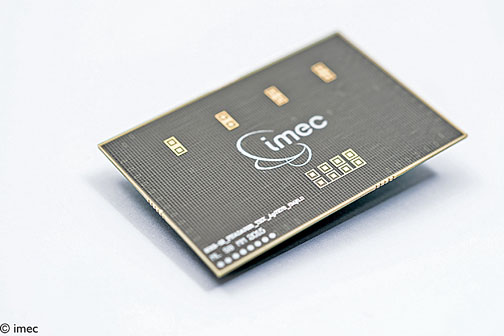This coming decade, we will witness a tsunami of smart connected systems. Machines, buildings, vehicles, and personal appliances will all be equipped with more intelligence. And that intelligence will be interconnected — the Internet of Things (IoT). Smart systems will be unobtrusive, ultra-small, cheap, intelligent, and energy-efficient. They will include sensors, actuators, and processing and communication abilities, often in a one-chip wireless solution.
One exciting development I've seen is an all-CMOS 79-GHz radar module. Simplified versions of such radars are already used in high-end automobiles to enable the vehicle to take over a number of tasks from the driver, but current radar sensors still resemble the radars that are used to regulate air and sea traffic. They are mostly manufactured using specific SiGe (silicon-germanium) technology. The resulting sensors are large and expensive, which makes them unsuited for unobtrusive integration into applications like self-driving cars or drones.
A solution would be to develop radar chips based on CMOS technology, something imec and other research labs have been looking into. Ultimately, the aim is to arrive at a compact radar-on-chip — a chip that offers far greater performance at a much lower power consumption than is currently the case. In addition, such a radar would have additional features and capabilities such as the ability to distinguish pedestrians from cyclists. That technology may even be able to identify individuals from the way they walk.
Over the past three years, imec has laid the groundwork by fabricating the building blocks for just such a radar-on-chip in 28-nm CMOS technology. So far, we have developed an effective 79-GHz transceiver, which, in 2015, we also integrated with antennas on a micro-PCB. The result is a fairly complete radar system measuring just a few square centimeters. The next step will be to make those building blocks even better, with additional features and an even better resolution. At a system level, the challenge is to develop the applications that exceed the capabilities of today’s radars.

One of the ways to make a radar sensor smaller and more sensitive is to work with an even higher signal frequency. For example, using 140 GHz with even smaller antennas integrated onto the chip ng in an enhanced Doppler resolution and a better depth resolution.
In parallel, our researchers are implementing smart signal processing for 79-GHz and 140-GHz systems. The reflected signal received by the radar not only contains information about the position of the objects around the radar, but also about their movements. This “micro-Doppler” information makes it possible to distinguish pedestrians from runners, cyclists, or animals. It may eventually even be used to distinguish individuals from one another. So, for instance, a car would be able to identify its driver and allow access based on the radar information.
To make this micro-Doppler information accessible, imec will deploy algorithms for pattern recognition and automatic learning — algorithms that are currently used in image processing. With these, our radar will learn to recognize and distinguish the micro-Doppler signature of individual objects. In a subsequent stage, we will then combine the signals of multiple radars to create a full 360-degree image of what is going on around the car.
Finally, to make the picture more complete and even smarter, it is possible to combine the radar information with that of other applications, such as cameras or ultrasonic sensors. Each type of sensor has a field of application for which it supplies unique information, and image sensors are typically better at recognizing markings on the road or traffic signs. This “sensor fusion” will make the radar a true IoT application. More information is available at http://magazine.imec.be.
Advertisement
Learn more about Imec





